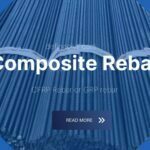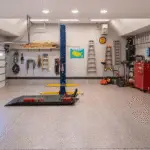When your work involves overhauling public installations or buildings, there is a certain amount of pressure behind you. This is something that people have a certain association with, and your aim is to improve it without making it something unrecognizable – or somehow robbing it of an aspect that people value.
Identity, however, is quite a malleable thing. It’s difficult to grasp what gives something its personality, which makes it difficult to preserve. To make matters even more complicated, some people are going to perceive this aspect differently, as it might be based on their own experience with it as a public space.

Focus on Quality
If the changes that are made to the space are done so with the intention of actually improving it, people might be more lenient on it, losing aspects that it once had. There might be problems with what the space is currently like, but that familiarity might make up for it – these same problems (or even new ones) can work more against the new version than they did the original. However, if the improvements mean that the functionality is now much more than it used to be – such as more space in a library or the fitting of accessibility options like elevators and ramps – that might make the changes worthwhile.
It’s also about the quality of the work. You want the end result to be the best that it can be, standing proud amidst an area that people can look at and feel genuinely good about. In order to deliver the best job possible, using tools and techniques like diamond wire sawing at https://bluegrassbit.com/service/diamond-wire-sawing/, might be worth your consideration. You don’t want to have to keep coming back to make improvements after the initial job, after all.
Listen to the People
If you’re concerned about what the public might think after you work on a public space, maybe just ask them for their feedback. In fact, doing this before you get started can give you some idea of what the people want to see and which changes would be most controversial. Of course, there’s no pleasing everyone. Even if you get a good idea of what people do and don’t want to see, this will clash with what other people want, and the end result will have some naysayers. Change is uncomfortable, but if you make an effort to make as many changes as possible in the interest of the space and the people behind it, you can reduce the amount of negative feedback you receive.
That being said, you likely are working as a contracted business, and that will be on the behalf of the local authority rather than the people themselves, meaning that you have certain criteria that you need to adhere to. This means that your efforts to keep both sides happy might not be so much in your control – instead, any issues might be straight between the public and those who hired you in the first place. That being said, it’s still worth keeping your ear to the ground as far as this conflict is concerned as it might inform the direction you take with your work.
Maintain the Aesthetic
If the building or space you’re tasked with transforming has a particular visual style, making sure that this remains intact and visible throughout all of the changes you make might be the best way to go about retaining its core. These aesthetics are often tied to a particular time in history – or something more particular to the area itself that the residents might have some form of attachment to.
For example, some buildings that are older might have been designed with a certain gothic style in mind – one that prevents it from looking the same as all of the other buildings around it with a more generic, modern appearance. Alternatively, though, some local history might have led to a particular type of stone being used for the building, in which case, you might only want to move away from this for good reason. At first, it might not seem like the type of stone can make that big of a difference, but when this one material comprises most of the building, it can deeply affect how it appears within the wider area.
Again, though, you might not feel as though this is practical given the parameters of your job – and that might mean that open communication throughout your work is a valuable path forward.
The problem – the Solution
For me, public space is political. I work with communities around the world, and as we know, every community has problems. Some of these problems are solved through the ballot box or city hall meetings or community efforts, like bike lanes and potholes and school budgets. But some problems are beyond the reach of these structures, like food deserts, community well-being and the loss of cultural identity.
These problems cannot be solved with the existing tool sets. I believe that public space is the most potent place to discuss these issues, because it contains the richest diversity of perspectives. And that’s what makes it so powerful. The existing parks, town squares, and sidewalks are not enough, though, which is why I’m interested in creating a new type of public space, one that’s built by the community and designed specifically for their needs.
Listen to the communities
I start by listening and by setting up actual outdoor living rooms, complete with couches, tables, chairs, rugs, and lamps, as a way of holding meetings to learn about the issues directly from the community. I use this technique to capture the voices and ideas of people that might not have time or feel comfortable in more formal meetings.
So why get someone to sit in a love seat in the middle of the street? In York, Alabama, the residents bear witness to the abandoned houses that cover the town, which are a constant reminder of the white flight that took place after segregation ended, when white homeowners left the area and let their houses fall into disrepair.
Experience with people of York
Teaming up with the people of York, we transformed an iconic, pink-sided, blighted property in the middle of town into a new house, called “Open House.” However, this house has a secret. It physically transforms into a 100-seat open-air theater for plays, movies, music, or whatever the community would like to experience.
And when it folds back up into the shape of a house, the image of the reclaimed pink siding reminds people of the past. After its opening, the mayor saw the potential in Open House and held the next town hall meeting there. The excitement of this unique gathering space brought new energy and gave a fresh viewpoint to collectively discuss the future of the town.
Replacing Garbage can with Digester
In Cambridge, Massachusetts, to highlight the issues of energy, waste, and climate change, we replaced a garbage can in a park with an anaerobic digester to transform dog waste into usable methane gas. Burning this methane lights the park and reduces greenhouse gases. By slightly changing an everyday experience in public space, the Park Spark Project provokes neighbors to have conversations about the natural and built systems around them and their connection to the environment.
In Lyons, Nebraska, residents spoke about the loss of social life as downtown storefronts began to shutter their doors, a result of the slow violence of disinvestment, which has left many rural downtowns empty. To address this loss of human connection, we used an abandoned storefront to turn Main Street into a movie theater.
The storefront wall is modified with hydraulics so that the awning and false front fold down over the sidewalk with the push of a button, providing seating for 100. As the community came together to build a storefront theater, an eccentric postman who makes sci-fi movies starring his cat proposed to make a documentary for the debut.
And so that summer, we turned downtown into a movie set and the townspeople into actors to create the movie “Decades,” a history of Lyons downtown from its founding to the present moment. On opening night, the main street, which is usually empty after dark, filled with people to watch the story of their town, leaving locals to question: How will we write the next chapter of Lyons? Well, the next chapter started with a series of movie screenings, public events, and international musicians, as well as a low-budget film community that has blossomed in Lyons, bringing in people from all over the world and a permanent art gallery that has opened next door.
My work harnesses the power of the built environment to focus on issues that communities and local governments have failed to address themselves, by creating projects so custom fit that the community naturally makes it their own.
When people from all walks of life have a shared experience in these spaces, it can lead to a paradigm shift in how we see our home, our community, and the world. For me, public space is political and becomes powerful when it sparks people’s imagination to envision a new future. And although every place I’ve worked is unique, it all boils down to one thing: if people can sit together, they can dream together.



















